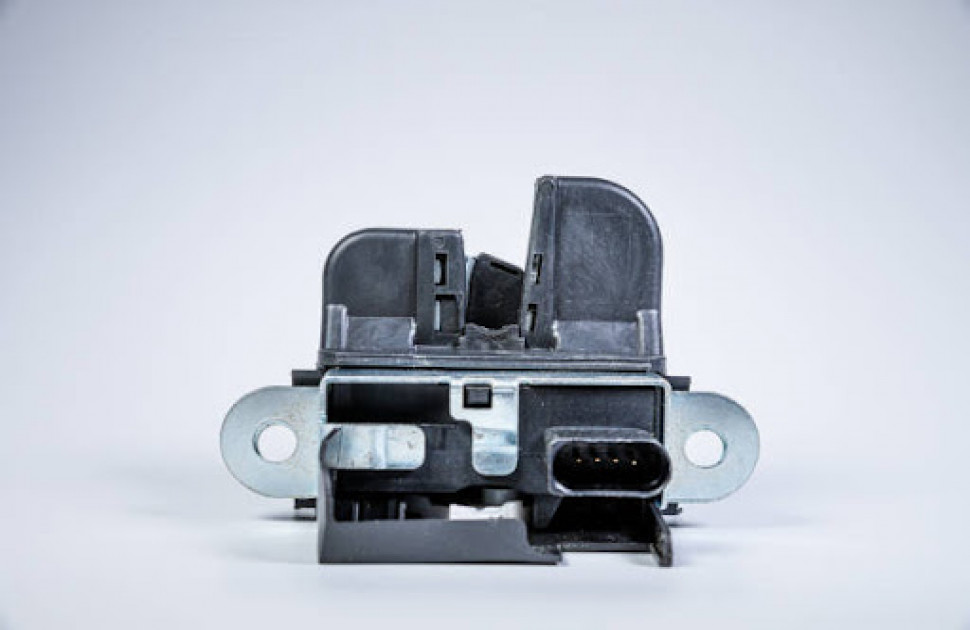Table Of Contents
- Introduction
- What is Ultrasonic Testing?
- Basic Theory of Ultrasonic Flaw Detection
- Procedure of Ultrasonic Flaw Detection
- Operating Principle of Ultrasonic Flaw Detector
- Advantages of Ultrasonic Testing In Flaw Detection
- Limitations of Ultrasonic Flaw Detection Testing
- Conclusion
- Key Takeaways
- FAQs
Introduction
Ultrasonic Testing (UT) is a widely used technique in various industries, including aerospace, automotive, and manufacturing.
It involves the use of high-frequency sound waves to detect flaws or abnormalities in materials or structures.
By understanding the principles and procedures of ultrasonic testing, professionals can ensure the safety and reliability of critical components in these industries.
What is Ultrasonic Testing?

Ultrasonic Testing has emerged as a pivotal non-destructive testing technique, revolutionizing quality control and safety assessments across various industries.
At its core, ultrasonic testing relies on the transmission of high-frequency sound waves through materials to detect internal flaws or assess thickness.
Basic Theory of Ultrasonic Flaw Detection
- The Foundation: Sound Waves and Their Role
Ultrasonic flaw detection relies on the fundamental principles of sound waves.
Here, ultrasonic refers to sound waves beyond the range of human hearing, typically above 20,000 hertz.
The process involves the emission of high-frequency sound waves into a material and the detection of echoes that bounce back.
The key idea is that any irregularities or flaws in the material will cause variations in the reflected waves.
- Piezoelectric Magic: Transducers Unveiled
At the heart of ultrasonic flaw detection are piezoelectric Transducers.
These devices have the remarkable ability to convert electrical energy into mechanical vibrations and vice versa.
When an electrical voltage is applied, the transducer generates ultrasonic waves, and when these waves encounter changes in the material, they reflect back to the transducer.
The transducer then converts these reflected waves back into electrical signals, forming the basis for flaw detection.
Procedure of Ultrasonic Flaw Detection
- Setting the Stage: Calibration and Coupling
Before diving into flaw detection, precise calibration is paramount.
Calibration ensures that the ultrasonic equipment is fine-tuned for the specific material being tested.
This involves adjusting parameters such as sound wave frequency and amplitude.
Coupling is another crucial step. A coupling medium, often a gel or oil, is applied to the surface of the material to enhance the transmission of ultrasonic waves.
This step guarantees optimal interaction between the Transducers and the material under examination.
- Scanning for Flaws: Techniques and Strategies
Flaw detection involves systematic scanning of the material.
The Transducer is moved across the surface in a predetermined pattern, emitting and receiving ultrasonic waves.
The received signals are then analyzed for any deviations, indicating the presence of flaws or irregularities.
Various scanning techniques, such as the pulse-echo method and the through-transmission method, are employed based on the nature of the material and the desired depth of inspection.
Operating Principle of Ultrasonic Flaw Detector
- Decoding Echoes: Signal Analysis
Once the ultrasonic waves encounter an irregularity, they produce echoes.
The ultrasonic flaw detector analyses these echoes, considering factors like amplitude, time of flight, and signal strength.
Anomalies in these parameters indicate the location, size, and nature of the flaw.
Advanced ultrasonic flaw detectors utilize sophisticated algorithms for real-time analysis, enhancing accuracy and efficiency.
- Versatility Unleashed: Applications Across Industries
The applications of ultrasonic flaw detection are vast.
From assessing weld integrity in the Aerospace Industry to detecting hidden corrosion in oil and gas pipelines, its versatility makes it a preferred choice in various sectors.
The non-invasive nature of Ultrasonic Testing ensures that materials remain undamaged during inspection, making it an indispensable tool for quality assurance.
Advantages of Ultrasonic Testing in Flaw Detection
In the realm of Non-destructive Testing, ultrasonic testing emerges as a powerful tool for flaw detection.
As industries strive for enhanced safety and efficiency, understanding the advantages of ultrasonic testing becomes paramount.
- Industrial Quality Control
The industrial sector heavily relies on Ultrasonic Testing for quality control, ensuring that materials and products meet stringent standards.
This section outlines how UT contributes to maintaining the highest quality standards in manufacturing.
- Long-term Savings
While initial setup costs might be higher, the long-term savings offered by UT are substantial.
Early detection and prevention of failures result in decreased downtime and maintenance costs.
- Reducing Downtime
The ability to perform Ultrasonic Testing without disrupting operations is a significant advantage.
It allows for regular inspections, reducing the need for extended shutdowns and minimizing their impact on productivity.
- Oil and Gas Sector
UT plays a pivotal role in the oil and gas sector, where Pipelines and equipment undergo constant stress.
Early detection of flaws is essential to prevent leaks and other potentially disastrous incidents.
- Healthcare and Medical Imaging
Beyond industrial applications, UT finds a place in healthcare for medical imaging.
Its non-invasive nature makes it ideal for diagnostics, providing detailed images without the need for surgery.
Limitations of Ultrasonic Flaw Detection Testing
Ultrasonic flaw detection testing has limitations, such as its ability to detect superficial flaws, and may not accurately detect complex or irregular surfaces.
- Thickness and Material Density
The thickness and density of the material under test can have an impact on the effectiveness of ultrasonic flaw detection.
In thicker materials or materials with high density, the penetration of sound waves may be limited, impacting the ability to detect flaws deep within the structure.
- Surface Conditions and Finish
The condition of the material's surface also poses a challenge.
Rough surfaces or irregular finishes can scatter sound waves, leading to difficulties in interpreting results accurately.
Achieving reliable readings is more challenging when dealing with materials with uneven surfaces.
- Skill-Dependent Interpretation
While ultrasonic flaw detection provides detailed information, the interpretation of results is highly skill-dependent.
Technicians need specialized training to accurately distinguish between normal variations and potential flaws.
The human element introduces a degree of subjectivity that can impact the reliability of the assessment.
Conclusion
Ultrasonic testing stands as a cornerstone for ensuring the integrity of materials and products.
Understanding ultrasonic testing involves grasping the synergy between sound waves, Transducers, calibration, and signal analysis.
The meticulous procedures employed in flaw detection contribute to the reliability and accuracy of this non-destructive testing method.
Ultrasonic Testing is widely used in various industries, such as aerospace, automotive, and manufacturing, to detect internal defects or flaws that may not be visible to the naked eye.
By sending high-frequency sound waves through a material, any abnormalities or inconsistencies can be identified, allowing for timely repairs or replacements to be made.
This Non-destructive Testing method not only saves time and resources but also ensures the safety and quality of the final product.
Key Takeaways
- Ultrasonic testing is widely used in aerospace, automotive, and manufacturing.
- UT revolutionizes quality control and safety assessments.
- It relies on high-frequency sound waves to detect internal flaws or assess thickness.
- Following systematic scanning using various techniques, calibration, and coupling are steps in the ultrasonic flaw detection process.
- Ultrasonic flaw detectors use signal analysis to decode echoes, which are applicable across industries.
- Ultrasonic testing is crucial for industrial quality control and ensuring high standards.
- Ultrasonic flaw detection testing has limits because of the thickness of the material and the condition of the surface.
- These factors can affect how well the test works and make it harder to tell the difference between normal variations and possible flaws.
- Ultrasonic Testing, a non-destructive method used in industries, ensures material integrity and safety.
FAQs
Q. What is the name of the ultrasonic flaw detector?
A. Ultrasonic flaw detectors come in various models, each designed for specific applications. Popular brands in the market include Olympus, GE Inspection Technologies, and Sonatest. These devices are tailored to cater to diverse industries, from aerospace to oil and gas.
Q. What does an ultrasonic flaw detector do?
A. An ultrasonic flaw detector serves as a non-destructive testing tool, aiming to detect internal flaws within materials. It operates on the principle of sending high-frequency sound waves into a material and analysing the echoes that bounce back. The detector interprets these echoes, revealing details about the material's internal structure, including potential defects like cracks or voids.
Q. How accurate is the ultrasonic flaw detector?
A. The accuracy of an ultrasonic flaw detector depends on various factors, including the device's quality, calibration, and the skill of the operator. High-end models can provide precise measurements with accuracy levels reaching a fraction of a millimeter. However, it's crucial to note that accurate results also hinge on proper calibration and the technician's expertise.
Q. What is an ultrasonic flaw detector and thickness gauge?
A. Some ultrasonic flaw detectors come equipped with thickness gauge functionality. This combination device allows for the simultaneous assessment of material thickness and flaw detection. It's particularly useful in scenarios where monitoring structural integrity alongside thickness variations is essential, such as in pipelines or pressure vessels.
Q. How does ultrasonic detection work?
A. Ultrasonic flaw detection relies on the propagation of high-frequency sound waves through a material. The process involves the following key steps:
1. Generating Ultrasonic Waves: The flaw detector generates ultrasonic waves through a Transducers, which is a handheld device placed on the material's surface.
2. Wave Propagation: These waves travel through the material until they encounter a boundary between different mediums or a flaw within the material.
3. Echo Reception: When the waves encounter a boundary or flaw, they reflect back to the transducer as echoes.
4. Analysis: The flaw detector's electronics analyze the time taken for the echoes to return and their amplitude. Variations in these parameters provide information about the material's internal structure.
5. Display: The results are displayed graphically on the device's screen, allowing the operator to interpret the data and identify any potential flaws.









